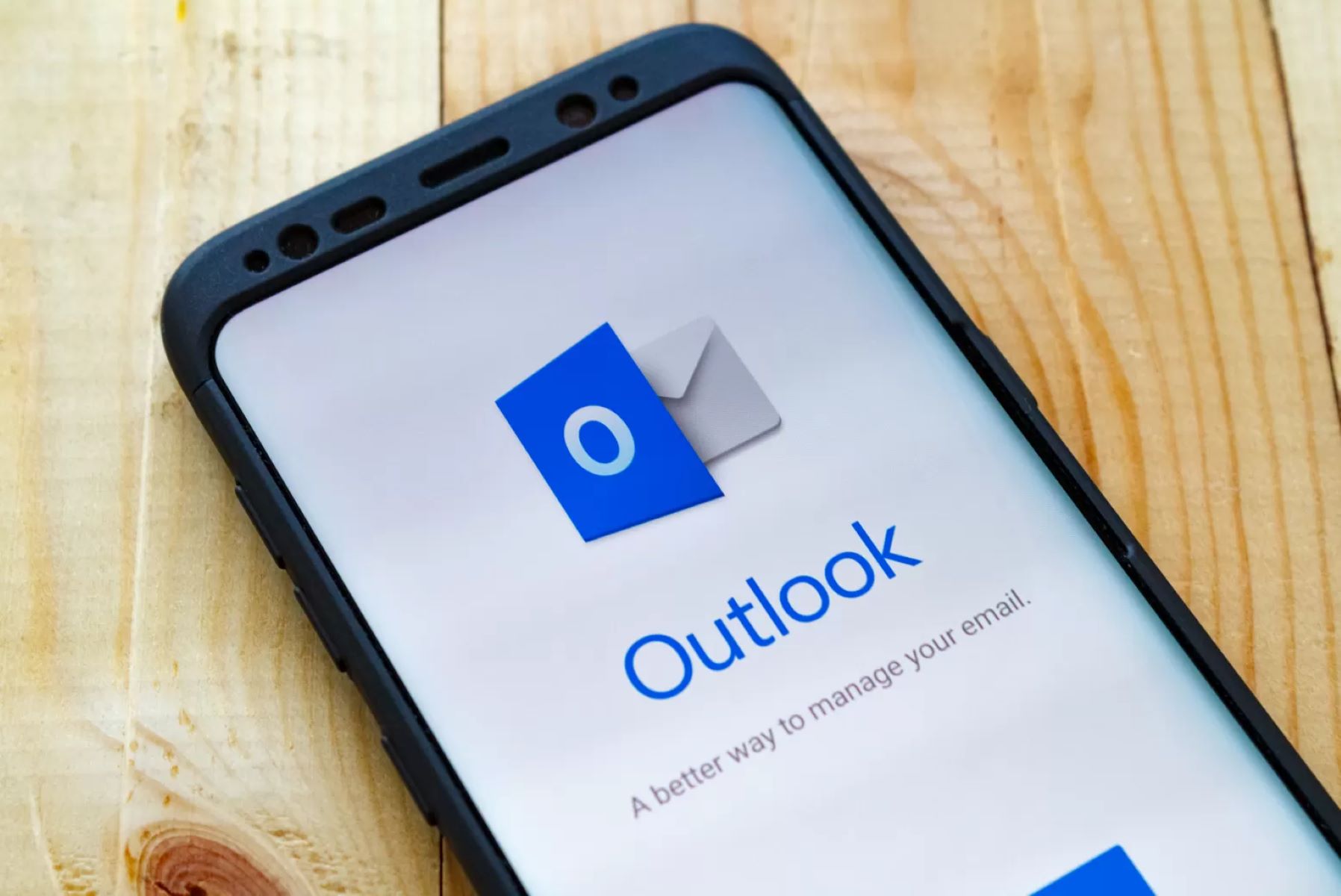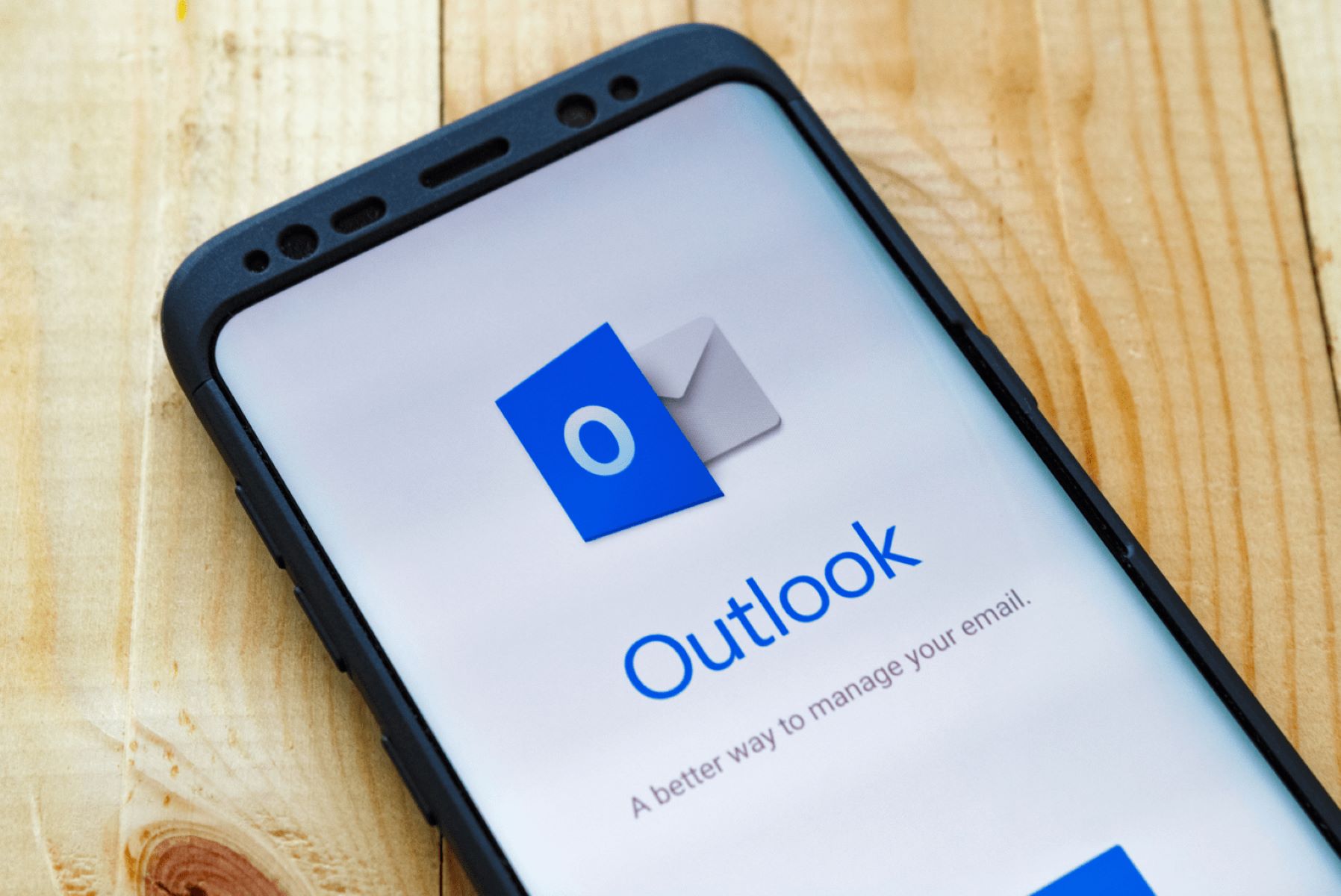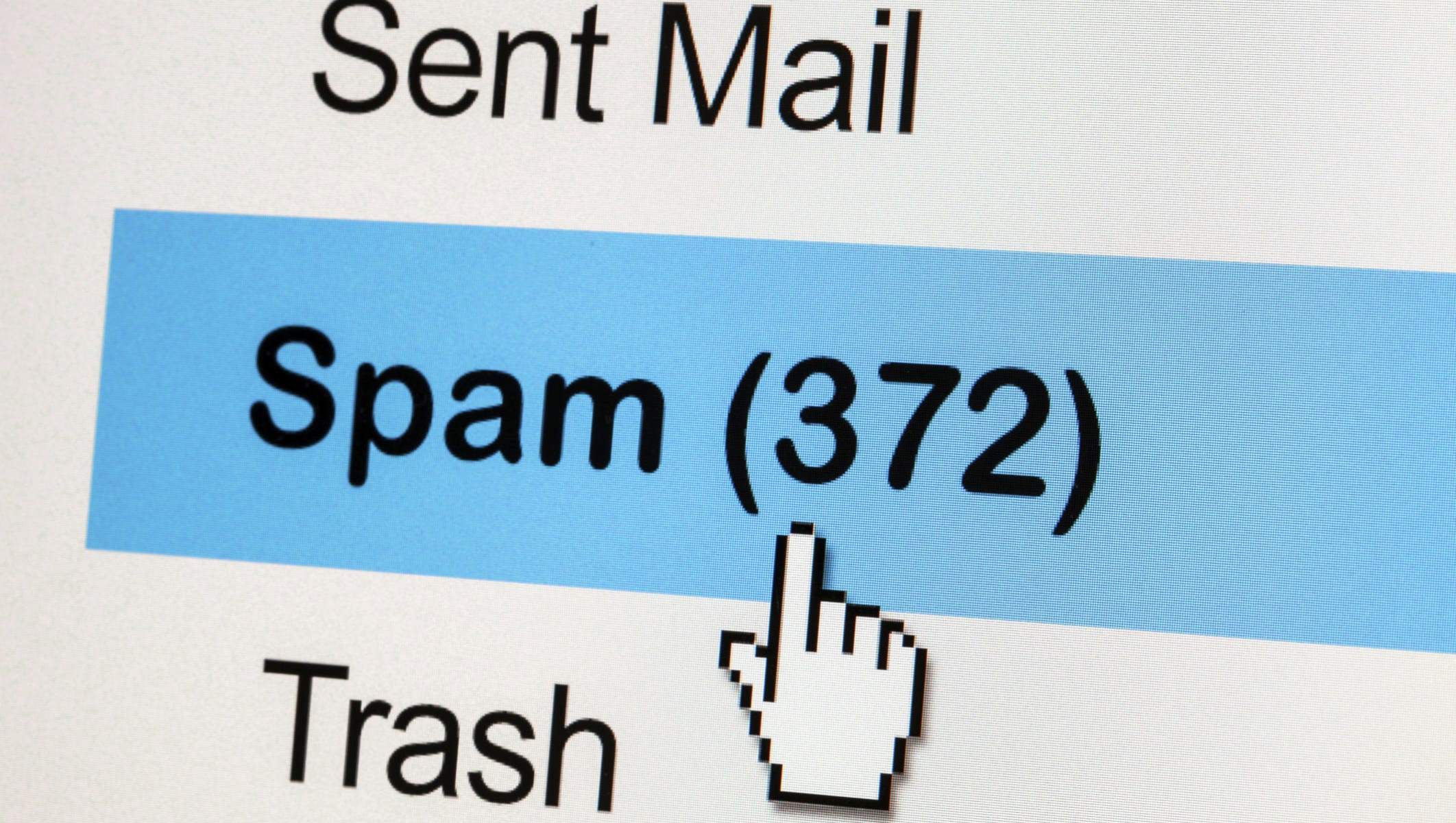Introduction
Welcome to this guide on how to block an email in Outlook. If you’ve ever received unwanted or spam emails, you know how frustrating it can be. Fortunately, Microsoft Outlook provides a simple solution to help you block these unwanted messages and regain control of your inbox.
Outlook is a popular email client used by millions of people around the world. It offers a wide range of features and functionalities, including the ability to block specific senders or domains. By blocking an email address, you can prevent any future emails from that sender from cluttering your inbox.
Whether you’re dealing with annoying promotional emails, persistent spam, or even harassing messages, blocking senders in Outlook can significantly improve your email experience. Not only does it keep unwanted emails out of sight, but it also allows you to focus on the messages that matter most.
In this guide, we’ll walk you through the step-by-step process of blocking an email address or domain in Outlook. We’ll also cover how to unblock a sender in case you change your mind or want to receive their emails again. Rest assured, by the end of this guide, you’ll have the tools and knowledge to keep your inbox clean and free from unwanted correspondence.
Step 1: Open Outlook and go to the Inbox
The first step in blocking an email in Outlook is to open the application and navigate to your inbox. Outlook can be accessed through various platforms, including desktop applications, web browsers, and mobile devices.
If you’re using the desktop application, simply double-click the Outlook icon on your desktop or search for “Outlook” in the start menu and click on it. For web-based access, open your preferred web browser and go to www.outlook.com. Sign in to your Outlook account using your email address and password.
Once you’re logged in, you’ll be directed to the Outlook home page. Look for the menu or navigation bar on the left-hand side of the screen and locate the “Inbox” option. Click on it to access your email inbox.
In the Outlook mobile app, tap on the icon that represents your inbox, usually located at the bottom of the screen. This will open your inbox and display all your received emails.
Regardless of the platform you’re using, make sure you are in the inbox view before proceeding to the next step.
Step 2: Open an email from the sender you want to block
To block an email in Outlook, you first need to open an email from the sender you want to block. This will allow you to access the necessary options for blocking the sender.
Navigate to your inbox and locate the email from the sender you wish to block. You can easily identify the email by looking at the subject line or the sender’s name and email address.
Once you’ve found the email, click on it to open it. In the desktop application, the email will open in a separate window or pane, allowing you to read its content and view any attachments. On the web version, the email will open in the main panel of the Outlook interface.
If you’re using the mobile app, tapping on the email will open it in a new screen, displaying the email contents, including text, images, and attachments.
Make sure to fully open the email and review its content before proceeding to the next step. It’s important to confirm that this is indeed the email you want to block and that you’re not blocking the wrong sender by mistake.
Note: If you’re dealing with multiple emails from the same sender that you want to block, you only need to open one of the emails to access the blocking options. Once you’ve blocked the sender, all future emails from that sender will be automatically blocked.
Step 3: Click on the three dots (…) in the top-right corner
After opening the email from the sender you want to block, the next step is to click on the three dots (…) located in the top-right corner of the email interface. These dots represent a menu that contains additional options for managing the email.
In the Outlook desktop application, you can find the three dots (…) in the toolbar at the top of the email window. Click on these dots, and a dropdown menu will appear.
If you’re using the web version of Outlook, the three dots (…) can be found at the top-right corner of the email window, just above the email content. Click on the dots, and a menu will pop up.
For the mobile app, the three dots (…) are usually located at the top-right or bottom-right corner of the email screen. Tap on the dots, and a menu will appear.
Once you’ve clicked on the three dots (…), a menu will open up, providing various options for managing the email. These options may include “Reply,” “Forward,” “Move,” “Delete,” and more. In this menu, you’ll find the option to block the sender.
It’s important to note that the location and appearance of the three dots (…) may vary slightly depending on the version of Outlook you’re using and the platform you’re accessing it from. However, the general purpose of these dots remains the same: to access additional options and settings for the email.
Step 4: Select “Block” from the drop-down menu
Once you have clicked on the three dots (…) in the top-right corner of the email interface, a drop-down menu will appear. In this menu, you will find the option to block the sender. It may be labeled as “Block” or “Block Sender,” depending on the version of Outlook you are using.
Locate and select the “Block” option from the drop-down menu. This action will prompt a confirmation message or a dialog box asking for your final confirmation to block the sender. The purpose of this confirmation is to ensure that you are intentionally blocking the sender and to prevent accidental blocking.
By selecting the “Block” option, Outlook will automatically add the sender’s email address or domain to your blocked senders list. This means that any future emails from this sender will be automatically directed to your junk or spam folder, bypassing your primary inbox.
Blocking a sender can help you reduce unwanted emails and prevent any potential threats or harassment. It allows you to have more control over the content of your inbox and prioritize important emails from trusted senders.
It’s worth noting that blocking a sender in Outlook is specific to the email account you are currently logged into. If you are using Outlook on multiple devices or have multiple email accounts, you will need to repeat this process for each account to block the sender on all platforms.
In the next step, we will cover how to add additional blocked senders to further customize your email blocking preferences.
Step 5: Confirm the blocking action
After selecting the “Block” option from the drop-down menu, Outlook will prompt you to confirm the blocking action. This confirmation step ensures that you are intentionally blocking the sender and prevents accidental blocking.
Depending on the version of Outlook you are using, you may see a pop-up message asking if you want to block the sender. The message may contain information about the consequences of blocking the sender, such as all future emails from the sender being sent to the junk folder.
Take a moment to review the confirmation message and ensure that you want to proceed with blocking the sender. If you are certain, click on the “Confirm” or “Block” button to finalize the blocking action.
Once you confirm the blocking action, Outlook will add the sender’s email address or domain to your blocked senders list. This means that any future emails from the blocked sender will be automatically routed to your junk folder or marked as spam.
Confirming the blocking action is an important step, as it ensures that you have intentionally chosen to block that specific sender. It is recommended to carefully consider your decision before proceeding, especially if you are dealing with legitimate senders or have any concerns about blocking the email address or domain.
If you accidentally block a sender or change your mind and want to receive their emails again, don’t worry. We’ll cover how to unblock a sender in a later step.
Step 6: Optionally, add additional blocked senders
Blocking a single sender in Outlook is useful, but you can further customize your email blocking preferences by adding additional blocked senders to your list. This allows you to effectively filter out unwanted emails from multiple sources.
To add additional blocked senders, follow these steps:
- Open Outlook and go to your inbox.
- Click on the gear icon or “Settings” located at the top-right corner of the Outlook interface. This will open the settings menu.
- From the settings menu, select “View all Outlook settings” or a similar option that gives you access to the full range of settings.
- Navigate to the “Mail” section or any related option that deals with email settings.
- Look for the “Junk email” or “Blocked senders” option. Click on it to access the blocked senders list.
- You will now see a list of the senders that are currently blocked. To add more senders to this list, click on the “Add” or “+” button.
- In the provided field, enter the email address or domain of the sender you want to block. You can type in multiple email addresses or domains, separating them with a semicolon (;).
- After entering the email address or domain, click on the “OK” or “Add” button to save the changes.
By adding additional blocked senders to your list, you can effectively filter out unwanted emails from multiple sources. This can help prevent spam, promotional emails, or any other emails that you consider undesirable from cluttering your inbox.
Keep in mind that the process of adding extra blocked senders may slightly vary depending on the version of Outlook you are using. However, the general idea remains the same: accessing the settings menu, navigating to the blocked senders list, and adding the desired email addresses or domains.
In the next step, we will cover how to unblock a sender in case you change your mind or want to receive their emails again.
Step 7: Unblock a sender, if needed
If you have previously blocked a sender in Outlook but have changed your mind or want to start receiving their emails again, you can easily unblock them. The unblocking process allows you to remove the sender’s email address or domain from your blocked senders list, allowing their emails to once again appear in your inbox.
To unblock a sender in Outlook, follow these steps:
- Open Outlook and go to your inbox.
- Click on the gear icon or “Settings” located at the top-right corner of the Outlook interface. This will open the settings menu.
- From the settings menu, select “View all Outlook settings” or a similar option that gives you access to the full range of settings.
- Navigate to the “Mail” section or any related option that deals with email settings.
- Look for the “Junk email” or “Blocked senders” option. Click on it to access the blocked senders list.
- You will now see a list of the senders that are currently blocked. Locate the email address or domain you want to unblock.
- To unblock the sender, click on the “Remove” or “Unblock” button next to their email address or domain. This will remove them from the blocked senders list.
- After unblocking the sender, their emails will resume appearing in your inbox as usual.
Unblocking a sender allows you to reverse the blocking action and start receiving their emails again. This can be useful if you blocked a sender by mistake or if you have resolved any issues that led to blocking them.
Remember that unblocking a sender is specific to the email account you are currently logged into. If you are using Outlook on multiple devices or have multiple email accounts, you will need to repeat this process for each account to unblock the sender on all platforms.
With the ability to block and unblock senders in Outlook, you can have better control over your email inbox and ensure that you receive the messages that matter most while managing unwanted or spam emails effectively.
Conclusion
Blocking an email in Outlook is a powerful tool to declutter your inbox and prevent unwanted messages from reaching your primary email folder. By following the step-by-step guide outlined above, you can easily block senders and domains that are sending spam, promotional emails, or any other content you consider undesirable.
Remember, always review the email content before blocking a sender to ensure you’re not inadvertently blocking legitimate emails. Additionally, Outlook allows you to add multiple senders to your blocked list and provides the option to unblock senders if you change your mind.
Blocking and unblocking email addresses or domains can improve your overall email experience, reduce distractions, and enhance productivity by allowing you to focus on important communications. It’s an effective way to ensure that your inbox is filled with messages that are relevant and meaningful to you.
So, the next time you encounter unwanted emails, don’t hesitate to take advantage of Outlook’s blocking feature. Take control of your inbox, keep it organized, and ensure that you only receive the messages that matter most to you.

























